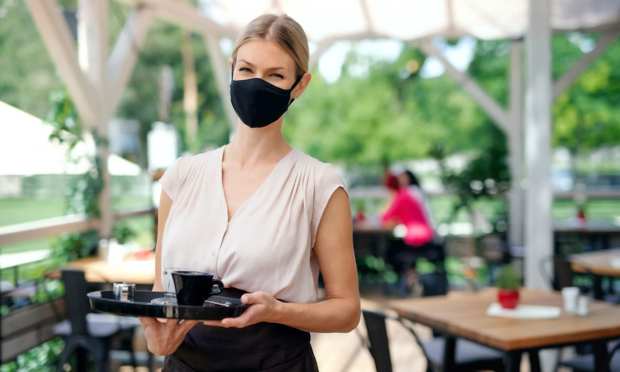Restaurants Embark On A Rocky Road To Recovery

As vaccines roll out across the country, restaurants are beginning to shift away from short-term survival mode and toward their longer-term goals. However, the industry is far from out of the woods. While the road to recovery is clearer today than it was months ago, and there is finally cause for hope, many factors could still jeopardize restaurants’ comeback plans.
For one thing, restaurants still need hundreds of billions of dollars in federal aid. In its “Restaurant Industry Blueprint for Recovery,” the National Restaurant Association wrote, “the restaurant industry’s survival is dependent on a targeted federal government response.” Included in this response, the association delineates, must be a $240 billion recovery fund to cover losses, reopening costs and personnel changes; a reworking of the Paycheck Protection Program (PPP) to ensure that it meets the needs of restaurants; and federal support for instating anti-COVID-19 measures, including providing employees with personal protective equipment (PPE) as the virus continues to affect dining safety, among other stipulations.
These measures may be overly optimistic. Last year, Congress’ $120 billion restaurant relief proposal never even made it to a vote in the Senate. While a smaller relief bill allotting $25 billion overwhelmingly passed in the Senate and is currently pending House approval, the $240 billion-plus in relief that the association deems necessary for the industry’s survival seems a long way away.
The PPP reform that the association specified, however, may be a more attainable goal. Just yesterday, The Washington Post reported that the Biden administration intends to channel more relief loans to smaller businesses. Additionally, the administration announced earlier this month that it would use the Defense Production Act to increase the availability of PPE, which could help restaurants achieve the level of safety they need to operate.
These federal measures, though they may not meet the restaurant industry’s stated needs, could nonetheless help kickstart the recovery. However, small restaurants will likely take longer than larger chains to see sales return to pre-pandemic levels. A Bank of America analysis last summer found that large chains were down just 4 percent year over year, while smaller chains and independent restaurants were down 25 percent, reported CNBC. It could take a long time for smaller players to catch up.
One burden on the horizon for restaurants small and large would be the COVID-19 relief package’s stipulation that the federal minimum wage is increased to $15 across industries. This would be a dramatic change for restaurants, which have historically relied on customers’ tips to bring employees’ wages up to the $7.25 federal minimum wage. A National Restaurant Association survey of restaurant operators found that 82 percent of restaurants’ economic recovery would be hurt by the increase, according to The Hill.
In its statement opposing the Raise the Wage Act, the association wrote, “if passed, H.R. 582 [the wage increase] would stifle new job creation, impose undue harm to our nation’s small business owners and harm those it proclaims to help … restaurant profit margins are razor-thin … a dramatic rise in labor costs could force restaurant owners and operators to raise menu prices, cut back on current employees’ hours and/or eliminate positions.”
On the plus side for the industry, the U.S. vaccine rollout “has been among the best in the world,” reports Axios, with 12 percent of Americans already having received at least one dose. Additionally, per CDC recommendations, food service workers are eligible to receive the vaccine in most areas before the general public. These vaccinations both decrease the cost for restaurants to ensure the safety of their employees and create a base of consumers who would feel more comfortable returning to indoor dining. In areas where it is allowed, including New York, Chicago and Portland, indoor dining is already drawing customers, suggesting a promising future as more and more consumers feel safe inside.
In fact, recent PYMNTS research found a remarkable amount of pent-up demand for on-premises dining. Specifically, 61 percent of consumers are interested in going out to restaurants more often than they currently do. High-income consumers are especially eager to return, and they tend to be restaurants’ most frequent patrons, according to this month’s edition of PYMNTS’ Delivering on Restaurant Rewards report, created in collaboration with Paytronix. Baby boomers and seniors are most excited of all to return to on-premises dining. Given that these consumers are among the first to be eligible for their vaccinations, a boost in sales could be coming to the restaurant industry in the very near future.
